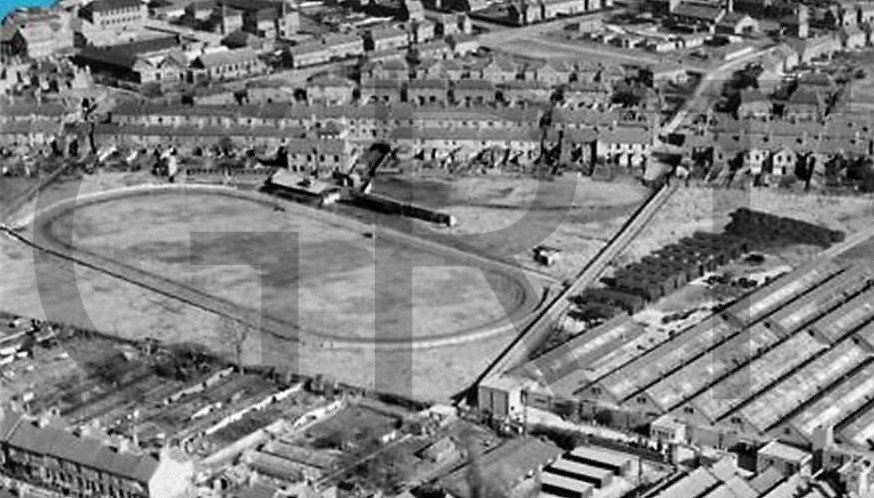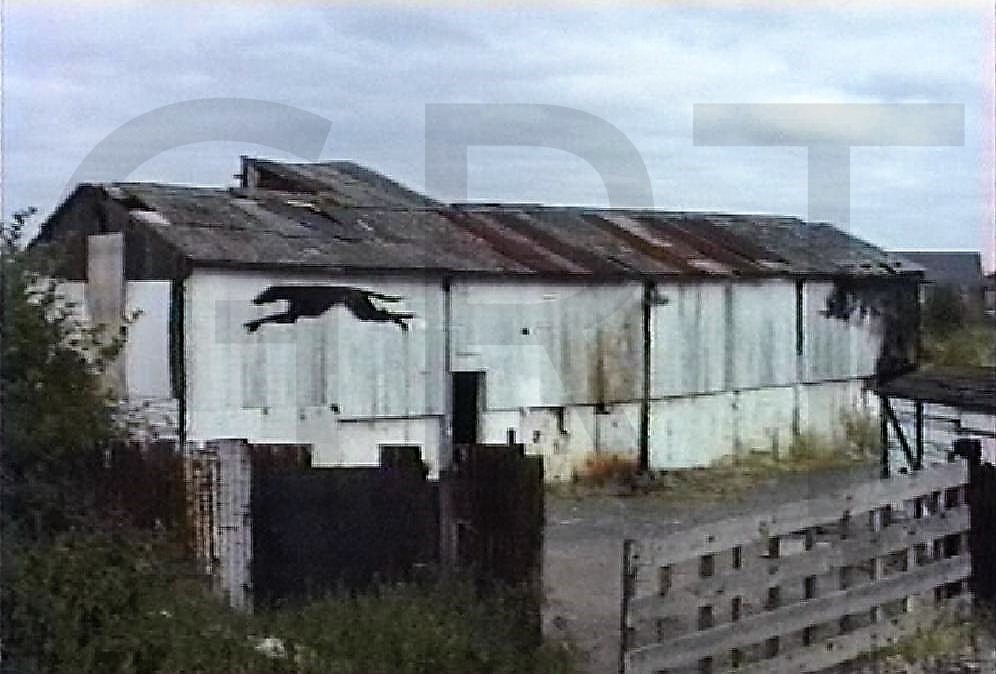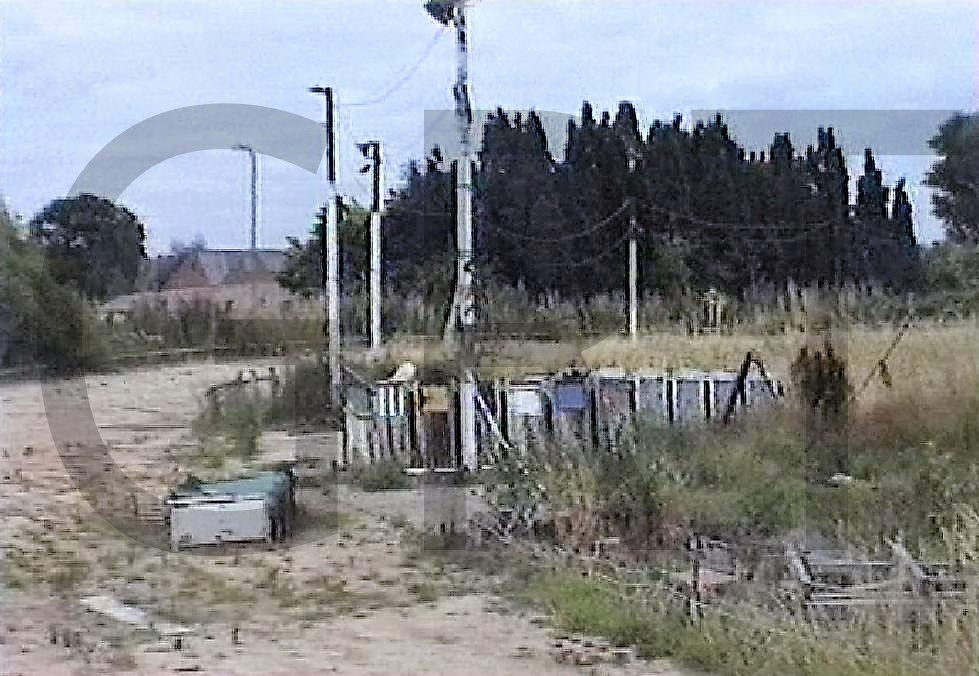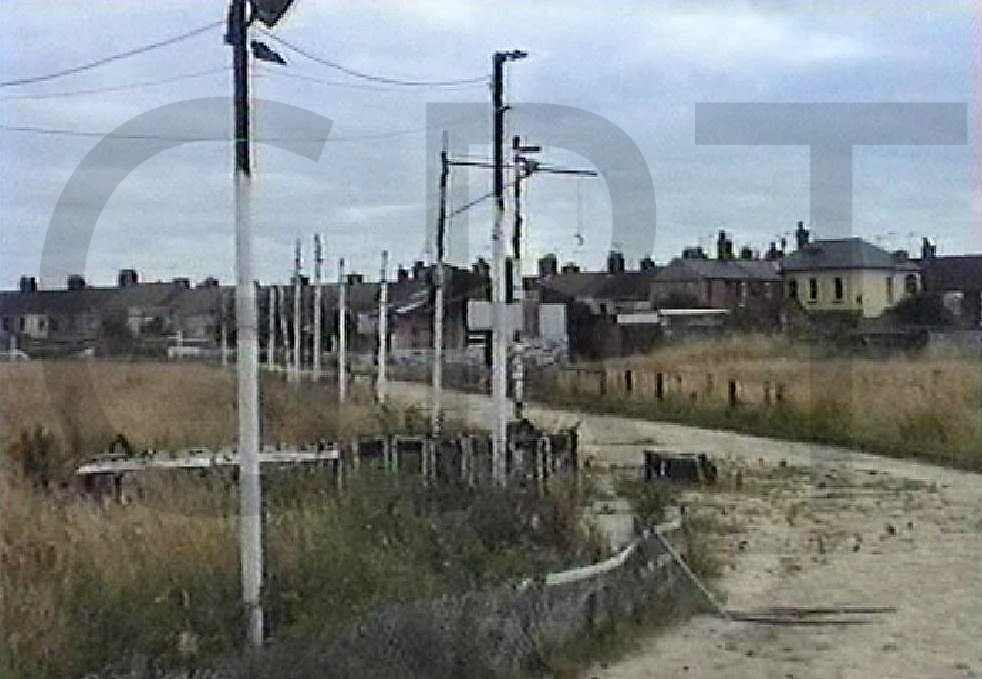Belvoir Road, Coalville, Leicestershire
POSTCODE———————————-LE67 3NX
LOCATED————————————About half a mile south of Coalville town centre behind the Halfway House Public House on Belvoir Road.
ORIGINAL SITE—————————–Developed on grazing land at the rear of an Old Roman Catholic Institute Chapel.
DATE CONSTRUCTED——————–Late 1927.
DATE VENUE OPENED——————-December 1927.
Meaning other sports may have taken place prior to the arrival of Greyhound Racing.
FIRST MEETING—————————–December 26th 1927.
Greyhound Racing only.
LICENSED OR INDEPENDENT———-Independent
All venues covered would have to be licensed with the government, licensed suggested in this section would refer to tracks operating under NGRC Rules.
INSIDE OR OUTSIDE HARE TYPE——Inside Sumner then switched to outside Sumner during 1982.
Please note that the Electric Hare suggested is only a guidance and would have been in operation for a certain amount of time at this venue. Although it is not necessarily guaranteed that it was operational all the time, as other types of lure may have been used and updated as time progressed.
DISTANCES———————————–300, 500 and 700 yards.
Please note that most racing venues distances had become varied throughout the years, the ones given above were at once point set and offers only a guidance to the track size.
CIRCUMFERENCE—————————Don’t know
Please note that alterations at most racing venues throughout its existence would see that the circumference of the track would vary, the one shown above offers only a guidance to the track size.
BIG RACE NAMES—————————Coalville Derby and Bookmakers Handicap.
STADIUM SHARED WITH——————Afgan Racing during its latter days.
LAST MEETING——————————-December 1998.
Greyhound Racing only.
STADIUM CLOSURE DATE—————-December 1998.
Meaning other sports may have taken place after Greyhound Racing had ceased.
STADIUM DEMOLITION——————-Around 2000.
BUILT ON SITE——————————-New housing located on Burgess Road, Harrison Place and Stadium Close were built during 2000 and 2001.
In some cases, structure’s that originally covered the venue after the stadium had been demolished, may have been themselves demolished too, so the one described is more likely to be the one which now presently covers the site.
EVIDENCE LEFT TODAY——————-Nothing known of.
FURTHER COMMENTS——————–Lord Oaksey a well known Television Horse Racing pundit had a spell as a bookmaker at the track.



















Coalville Greyhound Stadium falls in to the category of being one of the earliest independent greyhounds tracks that ever operated in Britain, its continuation lasting for more than seventy years before its closure came during the late 1990’s.
The venue was located half a mile south of Coalville town centre, in a clearing situated behind the Halfway House Public House on Belvoir Road. The only access to the stadium was down a narrow road adjacent to the Halfway, which still exists today, and offers a good landmark to where the stadium once lay.
The greyhound track was constructed during 1927 on open land west of an old Roman Catholic Institute Chapel, ready for its opening meeting in December of that year. Opening up as an independent track, the venue consisted of a small grandstand situated on its northeastern side, which housed the judges’ box, which lay next to a smaller covered standing area, which overlooked the home straight, leaving these buildings as the only distinctive features ever to have been found within the track’s boundaries.
The opening meeting came on Boxing Day, but poor wintery conditions put the event in doubt, yet after six hours of clearing the snow by volunteers, the meeting went ahead. A crowd of around 200 braved the elements to watch a meeting mixed with greyhounds and whippets. But disappointingly the meeting began with a void race, this due to one greyhound running the opposite way round to the others, only to collide with the hare as it came round. Sadly, the dog sustained a broken leg and had to be destroyed. During those pioneering years, a trackless sledge type lure system was used, but a more familiar inside Sumner hare became installed during the early years after the Second World War, before that too was replaced by an outside Sumner type in 1982.
Probably one of its more familiar characters linked to the Coalville track, was that of Lord Oaksey, a well-known television horse racing pundit, who for many years stood as a bookmaker at the track. Its main annual events were the Coalville Derby, and the Bookmakers Handicap, but other specially arranged meetings also took place. The track was 440 yards in circumference which created distances of 300, 510 and 715 yards, then once the outside hare became installed, it offered a 300-, 500- and 700-yard trip.
Its later years witnessed Afghan Hound racing, with organised meetings run on Sunday afternoons. During 1989 Coalville suffered three arson attacks within two months, fortunately not serious enough to halt proceeds, with local Animal Right Activists being suspected as the culprits. Sadly, Coalville became another victim of the 1990’s development schemes, a decade that would witness an alarming number of flapping tracks lost to these schemes around the UK. It was becoming clear around the early 90’s, that the Coalville venue’s days were numbered, as efforts to improve things were just not there, along with poor attendances and fewer greyhound entrants, it had no doubt found itself an easy target for the developers.
Its final meeting came in December 1998, leaving the stadium to just deteriorate away into something of a derelict site before being demolished in 1999. By 2000 new houses along Burgess Road, Stadium Close and Harrison Place, began to cover the site, leaving no trace at all of the Coalville Greyhound Track ever having been there.
A programme, photograph or even memorabilia for this track is required for this page, if you can help please contact me.

Recent Comments